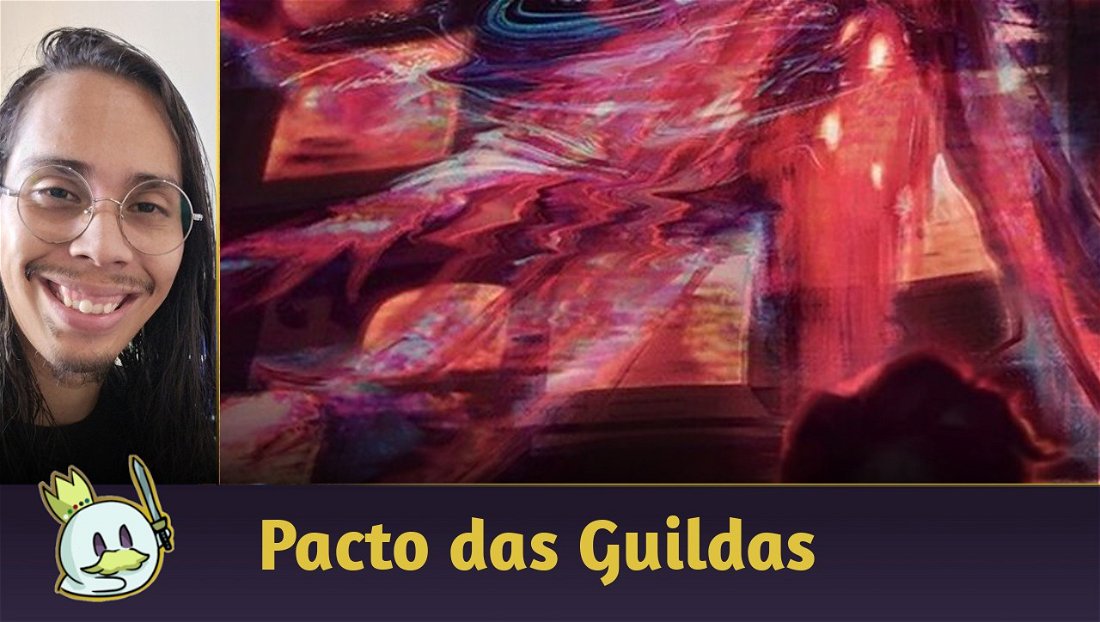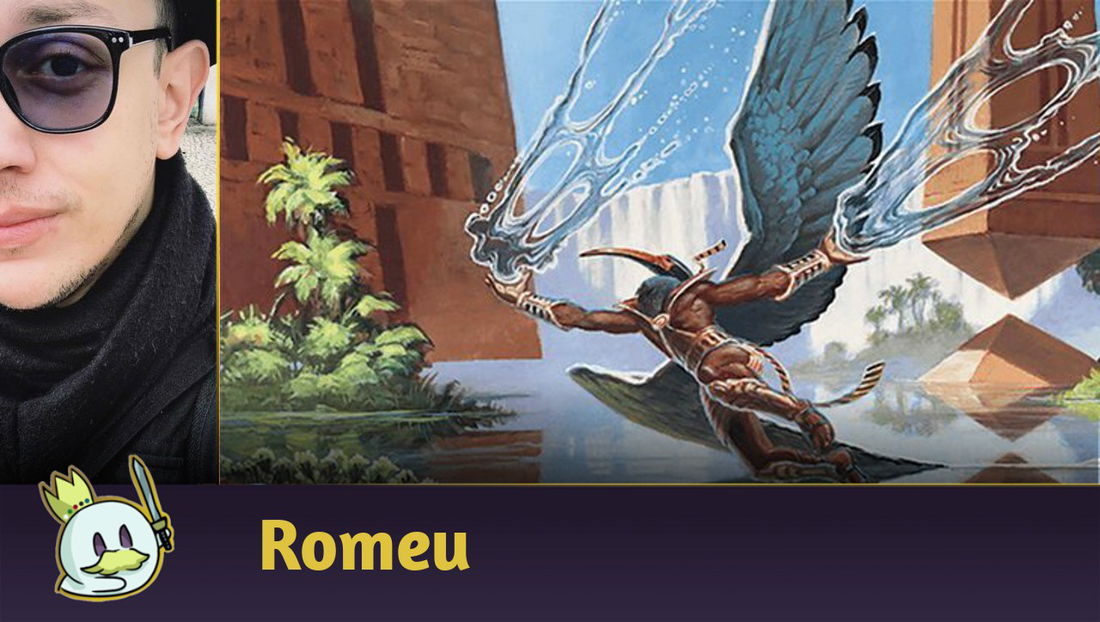Introduction
Greetings, my dear Legacy friends! We're back with another deck tech for our glorious format. This time, we'll revisit an old archetype (which we covered before) that got a breath of fresh air since Modern Horizons 3 came along: Cephalid Breakfast now plays the most broken bird in this entire set, and became one of the strongest decks in the format.

Deckbuilding
Cephalid Breakfast is one of the most traditional archetypes in Legacy; its name even follows an old tradition from the 2000s, when players used to name their decks after breakfast cereals, like Trix or Fruity Pebbles.
Throughout the years, the interaction between Cephalid Illusionist and some 0-cost effect that targets one of your creatures (Nomads en-Kor or Shuko) milled your entire deck at once. This made it possible to use win conditions like reviving a creature with Dread Return and using Narcomoebas as fuel for its Flashback cost. Ever since Theros Beyond Death, that revived creature was usually Thassa's Oracle. Urza's Saga, then, gave this deck more redundancy, besides an alternative out for games in which this combo wasn't viable.
Before Modern Horizons 3 reached the shelves, this archetype, just like any other combo archetype (besides Scaminator), was struggling with the overwhelming presence of Grief + Reanimate, and no longer shared the spotlight with other high-tier decks in this format.
Enters Nadu, Winged Wisdom.

This deck already played like a combo-control, unlike the last deck we covered (Necro Storm), which focuses completely on playing its combo as early as turn 1. Nadu gave it a new angle to exploit, as it now creates a lot of value, and turned several combo cards (Nomads en-Kor and Shuko, which weren't really useful outside the main, lethal combo) into true card machines. With Nadu, a simple Nomads en-Kor creates, on the spot, 4 cards that can become even more creatures as you put more creatures in play. This way, you'll win games through the overwhelming amount of card advantage you'll have, and there's always the combo to play if your opponent drops their guard.
Some cards that are often in this archetype but aren't in the list above are Delighted Halfling, Stoneforge Mystic (and, consequently, Kaldra Compleat and Pre-War Formalwear), Trinket Mage, Uro, Titan of Nature’s Wrath, Orim’s Chant, Lórien Revealed, Prismatic Ending, Pithing Needle, and Vexing Bauble.
Mulligan
Because this is a combo-control deck, you don't need to follow the combo mantra to the letter and always mulligan aggressively after your combo. This deck has this format's traditional cantrips (Brainstorm and Ponder), so you can keep many hands with it. Just keep in mind you'll be able to play your combo safely with great cards to protect you, or just delay the game and get Nadu, Winged Wisdom through any reactive game style your opponent might play.
It's also important to keep in mind that Urza's Saga finds you Shuko, which interacts both with Cephalid and Nadu, and will win you the game with them.
Examples of starting hands:

This is a good hand, as it can play the combo: you can cycle Step Through to find Cephalid Illusionist or even Nadu, Winged Wisdom if you think it's necessary. It has some protection because of Swords to Plowshares, and can find more gas with Ponder. Narcomoeba is usually a dead card, but might eventually be useful to pay for a Force of Will or create cards with Nadu. Verdict: Safe keep.

This is a complicated hand. On one side, it has, in theory, the combo to play on turn 2. But it also has 2 cards that you want in your deck to mill later. Theoretically, with one Brainstorm, you can return them to complete your winning combo (you can't, for instance, use Cabal Therapy's Flashback to discard a card in your hand because you only have one Therapy, and you have 2 in hand). You can also hoard 4 mana to play Cephalid and Oracle on the same turn, with Shuko already on the board. At this point, you must have realized that there are many conditions you need to meet to make this hand work, and it doesn't have any protection or cantrips. Verdict: Mulligan, though it seems decent. In practice, keeping this hand is like mulliganing to 5.

This hand has almost everything, except a reasonable amount of mana. It relies a lot on Brainstorm to find more lands, but it is quite powerful and has Force of Will as protection. Verdict: Risky keep.

This is a weird hand, but it has plenty of resources to find whatever you need, and is particularly resistant to discards. The bad news is that it is weak in terms of protection. Verdict: Keep if you're playing first, and keep if you're drawing first and if you're not playing against another combo deck.
Building the Sideboard
As this deck has access to both cantrips and Urza's Saga, it makes sense to use various cards in our sideboard to cover a wide array of opponents.
Haywire Mite and Pithing Needle are great options to get with the Saga. Soul-Guide Lantern is already in this list's main deck, but you could swap it with any of the others, depending on your opinion of the metagame.
In the sideboard we built, we added Flusterstorm and Pact of Negation to stop enemy combos, and Orim's Chant (and Fluster itself) to push your combo through. Serenity is still the same threat as usual against Simulacrum Synthesizer lists, Surgical Extraction is the most efficient answer against graveyard decks, and Prismatic Ending // Brazen Borrower are toolboxes against practically anything that may seem problematic.
A few cards we didn't list above, but you'll often find in this archetype are Blue Elemental Blast / Hydroblast, Carpet of Flowers, Force of Vigor, Lavinia, Azorius Renegade, Static Prison, and Veil of Summer.
Sideboard
Scaminator
Grief + Reanimate will always create a lot of advantage for your opponent, and Psychic Frog is a giant threat if you don't control it. This is an opponent Nadu usually shines against, as it will return to you all the cards you lost to their discards. Force of Will is a bit risky to keep, considering they'll attack your resources mercilessly again and again.
In:

Out:

Grixis / Temur / Dimir Delver
Dimir Delver is basically old Dimir Scam with Psychic Frog, so it combines a tempo style (Delver of Secrets, Wasteland, Daze) with Scam elements (Grief, Reanimate, Troll of Khazad-dûm). In any case, all 3 versions of the most traditional aggro deck in the format are a headache to any combo deck. Nadu might make a difference, both because it will return your resources to you and because it is a good barrier against Delver of Secrets and Dragon's Rage Channeler.
As usual, against these decks, Force of Will loses a bit of value post-side. Teferi, though it is, in theory, great to push your combo through, is also fragile and costs 3 mana in a sea of Wastelands and Dazes.
In:

Out:

Red Stompy
Chalice of the Void for 1 delays you, Trinisphere doesn't let you combo for less than 6 mana, and Blood Moon wrecks your mana base and simply kills Urza's Saga on the spot. Post-side, some players even bring up Harsh Mentor as a plus. So, it's not an easy opponent. Nadu is quite effective at winning the attrition war.
Post-side, you'll raise your defenses against these problematic permanents. Serenity is quite strong against them. You'll take out one Saga because you have fewer targets for it and it isn't that impacted by Blood Moon, and a Swords to Plowshares because Prismatic Ending and Brazen Borrower partially do the same job.
In:

Out:

Beanstalk Control
Nadu is great to fight the attrition war they impose on us. They'll also have to play the entire game with their backs to the wall, even more so because half your combo (Shuko) goes into play through Urza's Saga, over counters.
In:

Out:

Necro Storm
This game is basically determined on turn 1 and whether they can push through their combo. This is fundamentally different if you're playing or drawing first because your vulnerability to Chancellor of the Annex's effects depends on that.
Post-side, we'll remove basically anything that is too slow or removes creatures to slot in a few more answers. An interesting detail about Surgical Extraction, particularly in games in which your opponent begins playing, is that it is useful as a sort of counter against Chancellor of the Annex. You'll simply play it on anything without spending mana, they'll counter it with Chancellor, and that will open a window for you to use your Forces and try to stop their combo.
In:

Out:

Final Words
The addition of Nadu, Winged Wisdom to a classic archetype tells us that we can, yes, teach new tricks to an old dog. Because it gives us new ways to use Shuko and Nomads en-Kor, cards that were useless outside the combo, it makes this deck even more resilient. Now, it is not impossible to win games without the combo by just creating value with this bird to eventually win with it and Urza's Saga tokens.
What do you think of this deck? Tell us your thoughts in our comment section below!
Thank you for reading, and see you next time!















— 评论 0
, 反应 1
成为第一个发表评论的人